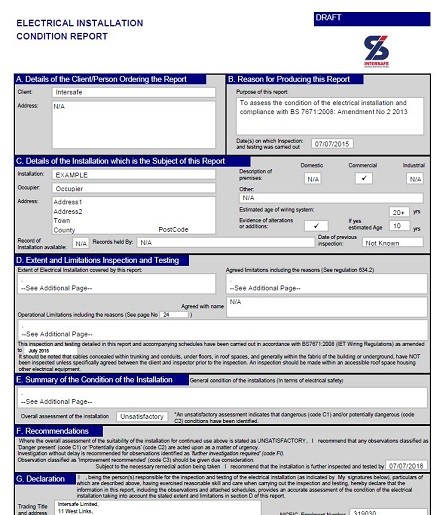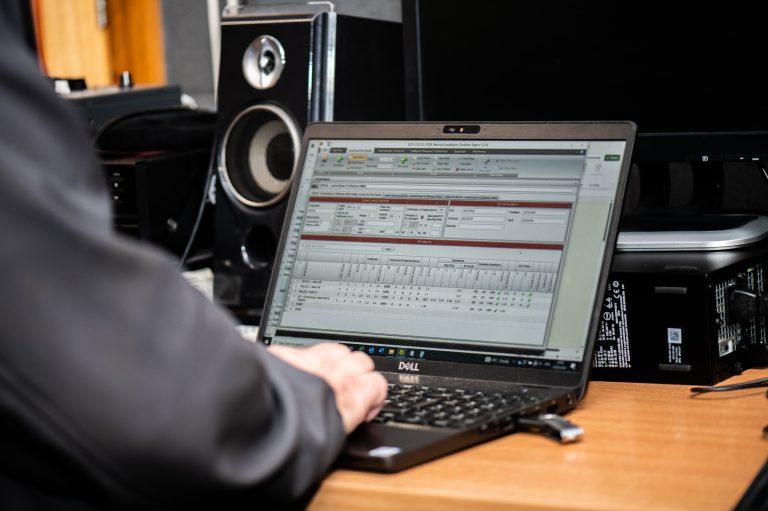Your Fixed Wiring Report can be confusing so we take a look in more detail and explain the different sections.
Fixed Installation Testing or Periodic Inspection and Testing forms an important part of any Health and Safety system. The Health & Safety Executive recommend that in order to comply with the current BS7671 Wiring Regulations an electrical inspection and testing programme should be undertaken at all places of work. The purpose of your Fixed Wiring Report is to officially report on the condition of your electrical installation.
The HSE say “Electricity is a familiar and necessary part of everyday life, but electricity can kill or severely injure people and cause damage to property.” If the unthinkable happens and someone receives a shock from part of your installation or if there is an electrical fire in your building then a court, inquest or insurance company will want to refer to the Fixed Wire testing report which makes this document very important.
All electrical contractors will issue a report and the format of this is based upon the forms in the BS7671 17th edition Wiring Regulations. The report consists of sections. Here is a breakdown of the sections:
Section A: Details of the Client/Person Ordering the Report ;
Contains your details, if you have many different sites, this will be your head office address.
Section B: Reason for Producing this Report ;
Explains the purpose of the report, it could be an insurance company request or simply a safety assessment.
Section C: Details of the Installation which is the Subject of this Report ;
These are the details of your installation such as the address, type of premises, age of the installation and details of any previous inspections.
Section D: Extent and Limitations Inspection and Testing ;
This gives any limitations to the testing, this is important as it states any parts of the installation or building that the electrical contractor has been unable to complete. ;
Section E: Summary of the Condition of the Installation ;
This states the general condition of the installations. An unsatisfactory assessment indicates that dangerous (code C1) and/or potentially dangerous (code C2) conditions and/or further investigation is needed (FI) have been identified. ;
Section F: Recommendations ;
This is a recommendation from the contractor as to when the installation should be further tested following any remedial work.
Section G: Declaration ;
This is a declaration by the electrician and the verifying officer that the inspection and testing has been completed to the agreed standard. You should never accept a report that has not been signed.
Section H: Schedule(s) ;
This states that the attached schedule forms part of the document and the report is only valid when the schedule is attached to it. ;
Section I: Supply Characteristics and Earthing Arrangements ;
This states the type of electricity source that supplies the installation so for example three-phase or single-phase. ;
Section J: Particulars of Installation Referred to in the Report ;
This section states the details of your earthing system. ;
Section K: Observations ;
This is the one you’ll probably be most interested in. It contains a list of observations and this is basically a list of what is wrong with your installation. These are faults that the inspector will have found when carrying out the testing. You’ll notice in the right hand column each defect has been coded, C1, C2, C3 or FI. You’ll need to have all C1 and C2 defects rectified for you to be compliant. Further investigation (FI) will be required without delay. ;
If you have any further questions regarding your Fixed Wire Testing report or any other questions about Electrical Safety compliance then don’t hesitate to contact Intersafe on 02380 610101.





